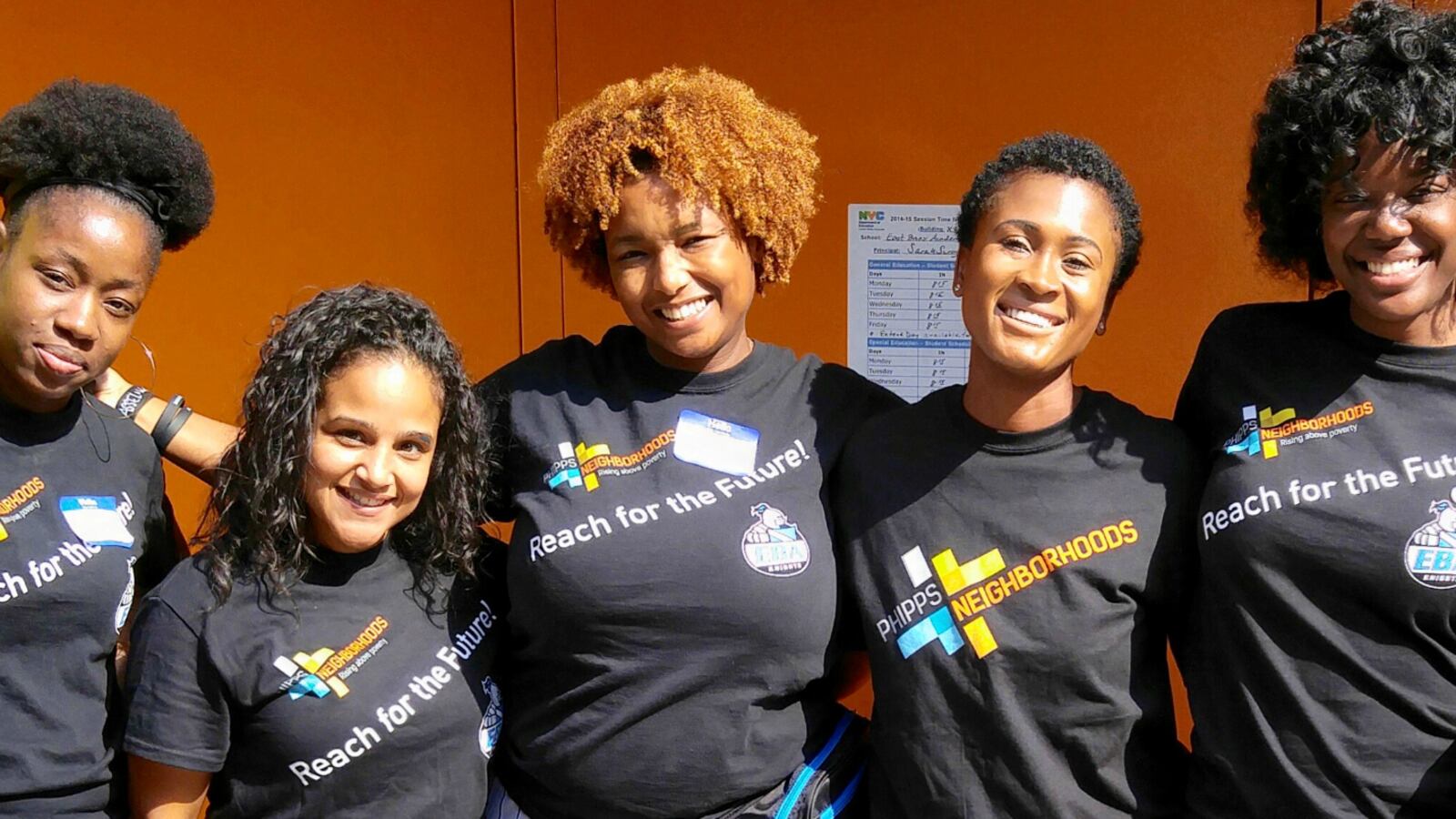As a teenager in the South Bronx, Perquida Payne’s neighborhood school also served as her dance studio, social hub, and job-counseling site.
So when she had the chance, many years later, to help convert a school in her old neighborhood into a “community school” full of social services and enrichment programs, she jumped on it.
Payne is now the community school director at East Bronx Academy of the Future, a middle and high school in the South Bronx. She works for the school’s nonprofit partner, Phipps Neighborhoods, which happens to be the same social-service agency that ran the after-school programs Payne relied on as a child.
Chalkbeat spoke with Payne at the Community Schools National Forum in Albuquerque this month. The interview has been condensed and edited.
Chalkbeat: Why did you decide to take this job?
Payne: The unique thing about that is that I grew up in Phipps. I grew up in Phipps housing and I grew up in Phipps programming. It just seemed like it was the universe’s way of saying, “Hey, this is full circle, you come back now. Now you come back and you give back.”
It’s amazing because the school where I’m at is literally up the street from where I grew up as a child. My mother still lives in the neighborhood. That’s so great sometimes to give the kids that perspective when they’re down and out about their circumstances. They’re like, “I’m just a kid from the ghetto,” and I’m like, “Yeah, me too. And I can support you, we can move forward with this.”
Has your understanding of what a community school is evolved since you’ve been on the job?
You have a different perspective on, these are some of things I need to connect families with, and [then] having this actual thing as a resource. So having extra toiletries available because we have homeless students who come in. Saying, “Here are some clothes, here’s something you can wash up and freshen up [with],” is putting real meat on the bones of what a community schools is supposed to be.
What are some of your team’s responsibilities as the community school’s lead partner?
We intervene with students to try to de-escalate incidents that they’re involved in. We have social-emotional meetings that we have weekly. We talk about students who have been referred [to us]. We developed a referral system for these exact needs. We have attendance meetings that I support the principal with. She and I have a weekly meeting, and I lead the community school leadership meeting, which really drives the community school initiative at [East Bronx Academy of the Future].
People have different definitions of community schools. What’s yours?
What we’re trying to do at EBA, at our community school, is really wrap around the whole child. It’s really a school that is designed to promote student success.
You build that up through strategic partnerships and programming that you put in the school to address the barriers that are coming up in the community. So if there’s a high population of folks in temporary housing, then maybe you do some workshops on housing or employment workshops. Or we do community dinners. We do community dinners once a month; we do breakfast biweekly, two Saturdays a month we’re doing breakfast for the community.
How does what you’re doing at East Bronx Academy compare to the school you attended?
The difference for me is that I grew up in Phipps programming. I was also involved in Phipps’ Beacon programs [which are school-based community centers]. So there was always, aside from my parents, some additional adults around who were like, “Don’t do this,” “Hey, here’s this resource,” “Hey, here’s this support.” I got a lot of opportunities as a child through my interactions with Phipps and their Beacon programs.
As I got older, I saw programming that I had grown up with go away. And I saw things in my community change in a negative way. So now to come in and be a part of the community school movement, it’s really try to return it to some supports that were there that I was able to benefit from as a child.
What kind of support did you get through the Beacon program?
I could go to the local school and I could be there. I could do homework, I could listen to music. There was a game room, I could play basketball, I could do dance class, I could do an internship program, or I had jobs. I had jobs as a teenager through this program that kept me busy and keep me from being outside getting into things that I had no business getting into.
That has a major impact on a young person’s life. Especially in this urban area where there’s poverty and there’s all of these other circumstances that can very easily change your life. That was there before, it left, and now we’re trying to bring it back.
If you can imagine a few years down the line where the model has taken hold at the school and the things you’re starting up now have taken root, how would the school look?
We would have a higher parent interaction, in terms of parents coming to volunteer at the school. We would have ongoing evening programming available to the community, possibly a homework dinner. We’d have weekend programming. And you’d see an increase in student success at the school, because we’d be helping all around … We’d see that our chronic absence went down and our daily attendance went up, and our graduation rates would go up.
I hope that you get there!
I’m excited. It’s baby steps. But little progress is progress.


